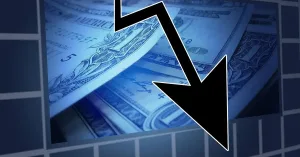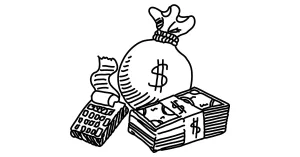On March 10th, 2023, Silicon Valley Bank failed. After a run that left the bank reeling, the FDIC stepped in, reorganized the bank, and reopened the new Silicon Valley Bridge Bank on March 13th. Though those that held accounts with Silicon Valley Bank are now able to withdraw their funds, the failure still sent ripples through the US financial landscape.
As the second largest FDIC-insured bank that has failed in the United States, and the largest bank failure since the 2008 financial crash, SVB has made the average consumer understandably wary of the economy’s health. After all, it is the everyday individual who will likely see and feel the majority of changes implemented as a result of SVB’s failure.
In this post, we’ll be diving into the reasons SVB and other major financial institutions have recently failed, and what that means for markets and consumers moving forward.
Why Did Silicon Valley Bank and Other Banks Fail?
Background
Between its inception in 1983 and the start of 2022, Silicon Valley Bank had built up a reliable reputation, becoming the 16th largest bank in America. Established, of course, in Santa Clara, California, SVB held $180,000,000,000 in total deposits at the time of its failure. It was the bank of choice for a range of start-ups, media companies, and vineyards in Silicon Valley and around the world. Notable names that had, at one point, been SVB customers include Airbnb, Fitbit, and Pinterest. More recently, the bank has focused on the “innovation economy”, including the risky cryptocurrency sector.
“Sound Financial Condition”
With New Year 2021, SVB was in the best position it had ever been. The bank saw significant increases in its deposits throughout 2020 and 2021, ($62 billion in March 2020 to $124 billion in March 2021), as a result of the technology boom brought on by the demands of the pandemic. However, early in 2021, and likely as a result of these increased deposits, SVB made the decision to go after higher returns on its investments. SVB opted to switch from short-term treasury bonds to slightly more risky, long-term securities. Subsequently, much of this $62 billion deposit increase was placed into uninsured, longer-term treasury bonds.
Inflation Surge
This gamble did not pay off. By mid-2021, the effects of an early inflation surge were already being felt across financial institutions. The Federal Reserve, looking to prevent this surge from getting out of control, raised interest rates and, over the following year, pushed the market value of long-term treasury bonds down. The bank began to suffer unrealized losses, and rising interest rates also caused a number of SVB’s clients to withdraw their deposits in order to meet liquidity requirements. On top of this economic struggle, SVB was without a Chief Risk Officer for just under a year, when the previous individual had stepped down in April 2022, and was not replaced until January 2023.
Failure
In January, interest rates began to rise again and SVB began selling its securities. On March 8th, 2023, recognizing they required $2.25 billion to make good on withdrawals, SVB announced it was holding an emergency sale of its treasury stock. Rather than inspiring confidence and generating interest in these sales, this announcement panicked SVB’s clients, who made a run on the bank the very next day. On 9th March 2023, $42 billion was withdrawn from various SVB accounts. The bank was promptly seized on the morning of March 10th by the California Department of Financial Protection and Innovation, and put under receivership of the FDIC.
Ongoing Panic
The panic did not end with SVB, however. Once the public learned of SVB’s depreciating portfolio and struggle to provide withdrawals, fearful glances were thrown toward Signature Bank. A New York-based bank since 2001, Signature held $87 billion in total deposits at the time of failure. But, a significant number of these deposits remained completely uninsured due to reaching the maximum, and the bank also had a history of crypto lending. After the collapse of the FTX cryptocurrency exchange, an erosion of trust in crypto as a whole, and the collapse of the crypto-friendly Silvergate Bank also on the 10th of March, Signature was simply the next domino to fall. Customers withdrew $10 billion in deposits overnight and the bank was seized on 12th March 2023.
Curbing the Crisis
Finally, watching the chaos and being aware that 68% of its deposits were uninsured, customers of First Republic bank made another mass withdrawal. Seeing another bank come close to failure, JPMorgan Chase, Wells Fargo, Goldman Sachs, Citigroup, Bank of America, and others stepped in to deposit $30 billion into the First Republic. Considered ‘too big to fail’ by many, these giants of American banking chose to assist the First Republic in order to curb the growing effect of these runs on the economy and restore confidence in mid-size financial institutions. However, the fear of a potential First Republic failure remains, with First Republic stock plummeting almost 90% in the last 12 days.
Simplifying the Story
In short, a combination of factors led to the failure of SVB and other mid-size financial institutions. These include:
- Uninsured deposits
- Risky investment decisions
- Rising interest rates and subsequent unrealized losses
- Failure of cryptocurrency
- Volatility of tech-sector
- Lack of internal audit
- Public panic
What These Failures Mean for the Average Consumer…
The Current Situation
Although there were short periods where the withdrawal was impossible, the FDIC has since assured those consumers who held accounts with the failed banks that they will receive their deposits in full, should they still wish to withdraw. In a joint statement from the FDIC, Treasury, and Federal Reserve released on 13th March 2023, they also assured that “no losses associated with the resolution of Silicon Valley Bank will be borne by the taxpayer.” Those institutions that may see instability as a result of general panic will receive assistance from the new Bank Term Funding Program.
In general, experts, advisors, and even President Biden are informing average consumers that there is no need to make panicked withdrawals. In fact, these withdrawals will only lead the situation to worsen. Should you wish to make a genuine withdrawal, your money will be available as and when you need it. The same goes for deposits, which will still receive standard coverage by the FIDC up to $250,000 per account categorization, per depositor, and per bank. Banking experts advise splitting deposits between banks and account categorization, such as checking/saving/money market accounts, in order to stay under this insurance limit.
The FDIC currently insures 4,703 financial institutions, so it’s very likely your deposits are already insured. If you would like to check whether your bank is covered by the FDIC, you can check through their site, or give them a call on their toll-free number: 877-275-3342.
In the Short-Term
Many experts have signaled a post-pandemic bull market. However, it’s likely this growth and optimism will begin to gradually slow in the wake of these banking failures. With a bullish market still present though, and the lack of correction in tech stock prices, the average consumer may be led into potentially damaging investment decisions when it comes to purchasing/selling these stocks. Despite the situation cooling, investors and consumers should remain vigilant about significant financial decisions over the coming year.
In general, depositing through regional banks and investing in the highly volatile tech sector may not be the smartest moves - unless of course, you’re opting to short-sell, although this is still a risky strategy with the new safety nets being implemented. Diversification in investments, and limited exposure to the financial sector through index funds are both safety measures to discuss with your portfolio manager.
In the Long-Term
Many commentators have highlighted the fact that the Federal Reserve’s decision to combat inflation by raising interest rates has left banks, and their consumers, in highly vulnerable positions. The decision has also exposed a deal of fragility among smaller, regional financial institutions, which can have a detrimental knock-on effect on the economy as a whole. In response to the situation, Goldman Sachs released a probability forecast that put the likelihood of a recession in the next 12 months at 35%, as opposed to the previous 25%. This decision is “reflecting increased near-term uncertainty around the economic effects of small bank stress.”
Although bonds in general are being devalued by the ongoing decision to raise interest rates, experts still brand the general banking sector and the economy as relatively healthy, even in the wake of these failures. The issues regarding bond devaluation are evident to banks, with $2 trillion in available capital to tackle the billion-dollar problem. Consumers shouldn’t see major increases in interest rates but should keep an eye on the real estate market and private equity loans, as it is unlikely the Federal Reserve will risk a weakened economy by reversing interest rate raises. Though these sectors may see some volatility, Democracy Journal’s Richard Vague stated “there is nothing approaching the rampant over-lending and credit concerns that led to the 2008 banking crisis.”
Sources
- https://www.cnbc.com/2023/03/13/how-the-signature-bank-silicon-valley-bank-failures-may-affect-you.html
- https://money.com/bank-failures-explained-questions-answers/
- https://en.wikipedia.org/wiki/Collapse_of_Silicon_Valley_Bank
- https://edition.cnn.com/2023/03/14/economy/svb-shut-down-customer-employees-fdic/index.html
- https://democracyjournal.org/arguments/the-svb-failure-why-it-happened-and-what-it-means/
- https://www.investopedia.com/what-happened-to-signature-bank-7370710
- https://www.thestreet.com/investing/cryptocurrency/silvergate-bank-collapses
- https://www.nytimes.com/2023/03/20/business/first-republic-bank.html
- https://www.youtube.com/watch?v=ifTykhVwbwU
- https://banks.data.fdic.gov/bankfind-suite/bankfind
- https://www.barrons.com/articles/goldman-sachs-us-recession-bank-d5ce603b





















Add comment